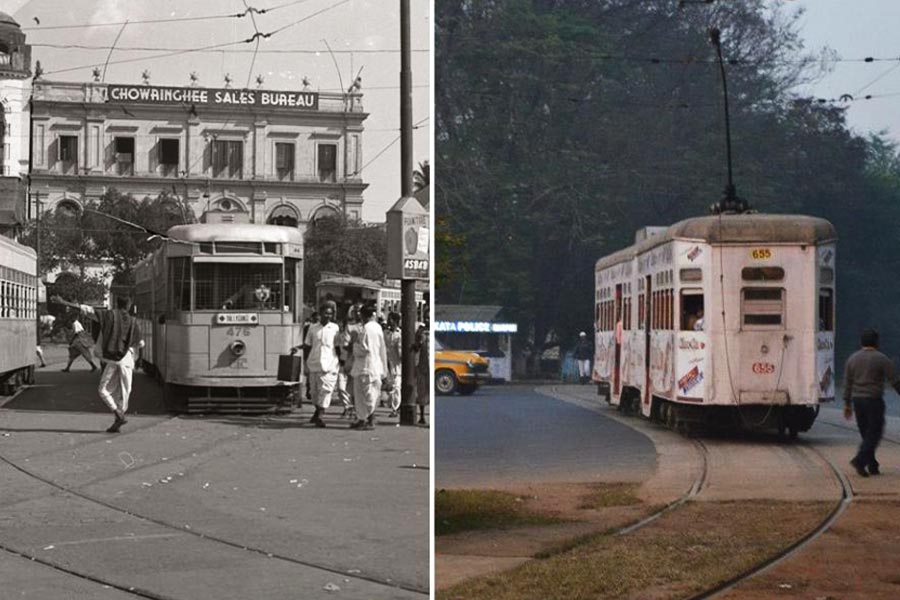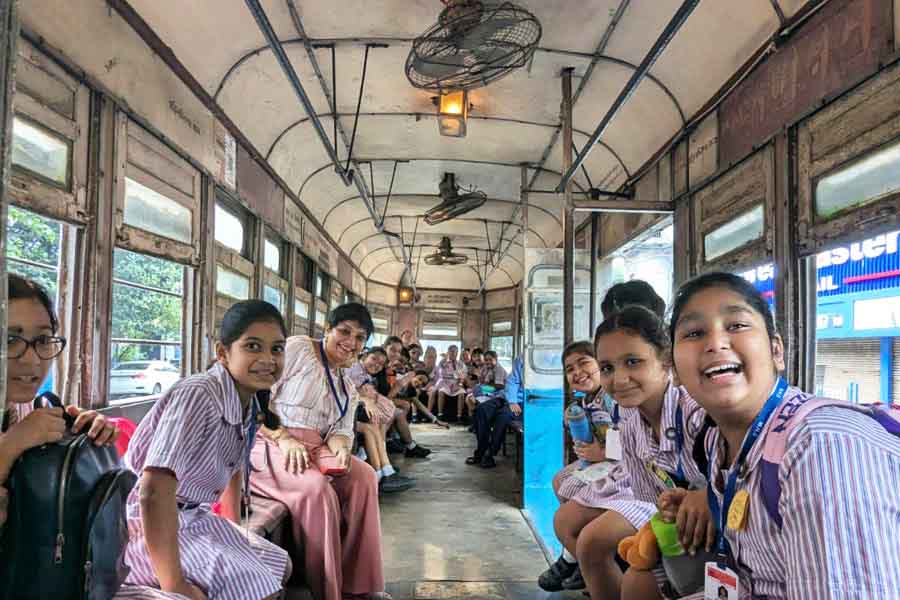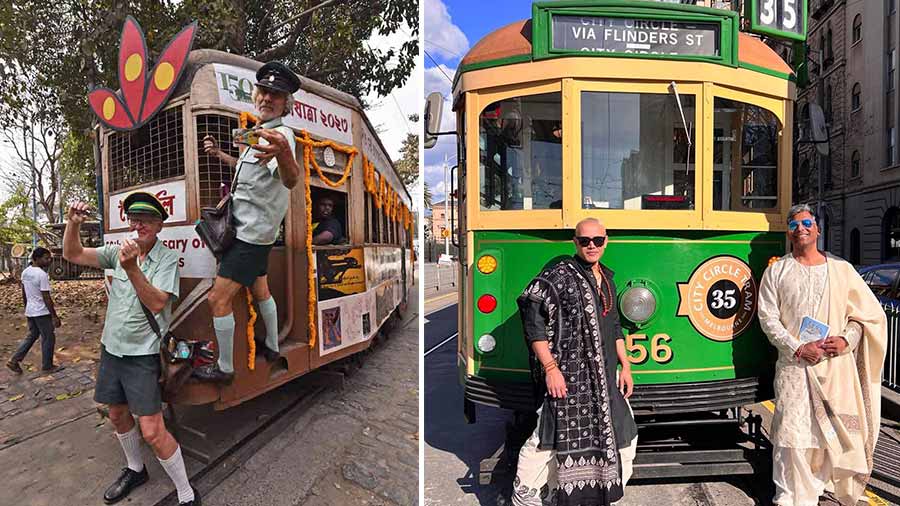Growing up in Kolkata , I fondly recall passing by the Tollygunge Tram Depot on the way to my Didar bari (grandparent’s house) with the gentle tunes of Chol rastay shaaji tramline... playing in the background. There’s something comforting about watching a tram slowly roll down the street — the clattering of its wheels, wind rushing in through the windows, the rhythmic clang of the bell, and the sight of old-school conductors evoke an unparalleled sense of belonging.
The recent news of discontinuation of trams marked the end of an era not just for the city's transport system, but for Indian cinema as well — a part of the Kolkata we know and love lost forever.
A few days ago, while watching the theatrical re-release of Satyajit Ray’s Mahangar (1963), I noticed how trams have played a salient — often overlooked — role in countless films through the decades as moving backdrops to stories of love, loss, and life unfolding on the silver screen. The opening scene of Mahanagar focusing purely on a moving tram cable captures the essence of the daily commute in 1960s Kolkata — at that time, a city in transition.
This inspired me to embark on a journey through four films where trams were an integral part of the narrative.
‘Apur Sansar’ (1959): Trams as silent observers of life’s journey
In Apur Sansar — the last part of the Apu trilogy which begins with Pather Panchali — directed by Satyajit Ray, trams play an understated role as silent witnesses to the human experience. Gliding through the streets of Kolkata, they are ever-present yet indifferent to personal stories. The city, like its trams, doesn’t stop for anyone.

Interestingly, my decision to watch the film stemmed from the iconic shot of Apu (Soumitra Chatterjee) sitting in a tram with his head against the window, deep in thought. The busy city passes by outside, in contrast to his internal state of reflection. This scene stuck with me as I often find myself staring blankly, lost in thoughts while travelling. I found comfort in Apu’s wandering thoughts and his yearning for something more.
In another memorable scene, Apu attempts to read a letter from his wife, standing in a crowded tram while a stranger tries to catch a glimpse of its contents. Funny yet intrusive, and oddly familiar, as public spaces often blur the boundaries of privacy.
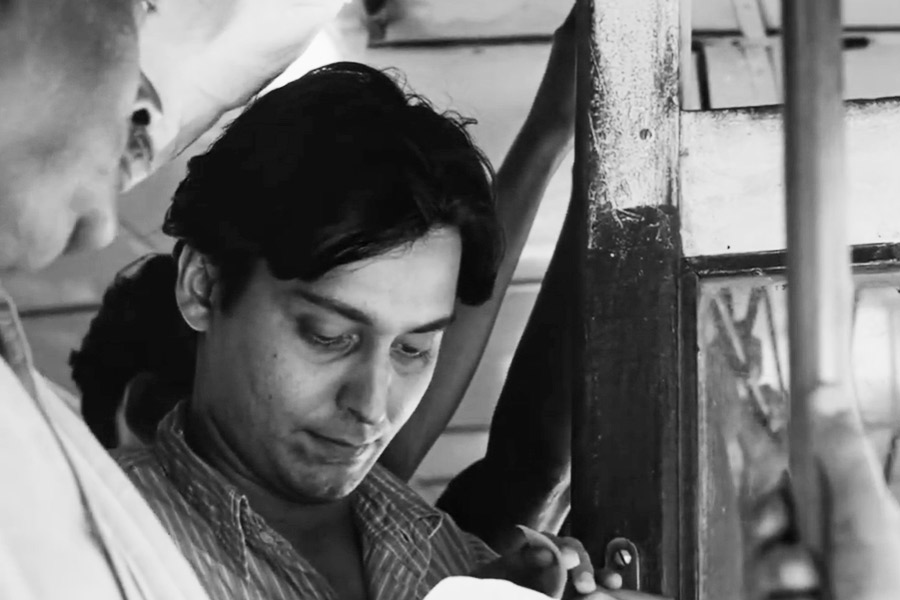
As someone who finds solace in reading while travelling, whether in crowded metros or buses, I loved how the tram became a place for Apu’s quiet moments amidst the chaos. In a world where life moves on relentlessly, trams remain silent observers to our struggles, dreams, and the passage of time, just as they did for Apu.
‘Barfi!’ (2012): Trams as tracks of yearning
A personal favourite, the scene in Barfi!, directed by Aurag Basu, where Barfi (Ranbir Kapoor), Jhilmil (Priyanka Chopra), and Shruti (Ileana D’Cruz) ride a tram is a delightful blend of innocence and nostalgia with Phir Le Aya Dil perfectly woven into the scene.
It portrays the simplicity of Jhilmil and Barfi’s innocent, almost childlike love and Shruti’s quiet reflection on the past and their relationship. The lines, Phir le aaya dil majboor kya keeje… Raas na aaya rehna door kya keeje… intensifies the sense of bittersweet, exploring love that still lingers despite distance and circumstances.
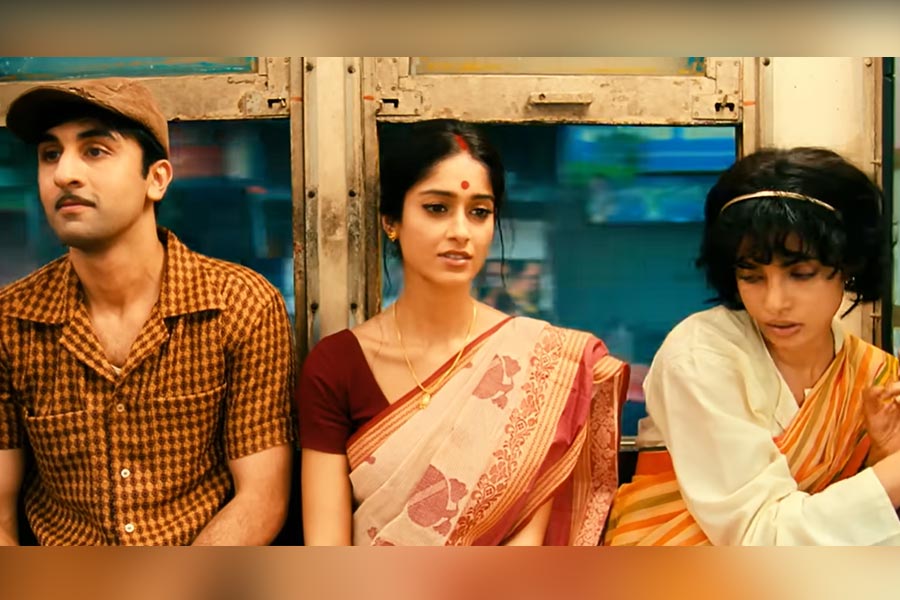
I loved how the yellow lighting inside the tram creates a warm, almost dreamy atmosphere portraying the timelessness of the scene. The confined space serves as an intimate setting, even amidst the crowd, where emotions are unspoken, yet deeply felt.
As the tram moves slowly through the streets, it becomes a metaphor for the time passing by, a reminder of life’s unpredictable journey where love, longing and regret often coexist. It’s a beautiful shot where the tram’s slow pace allows the audience to savour the warmth and quiet introspection which depicts that human connections, however fleeting, leave an indelible mark on life’s journey.
‘Praktan’ (2016) : Trams as vehicles of nostalgia
The Shiboprosad Mukherjee, Nandita Roy directorial, true to its name, praktan meaning “former” is a narrative steeped in the past. The film tells the story of a divorced couple, Sudipa (Rituparna Sengupta) and Ujaan (Prosenjit Chatterjee), who unexpectedly meet on a train years after their separation. It is through Sudipa’s flashbacks of their time spent together in Kolkata that the story unfolds and the tram emerges as a spectator to their story.
In the scenes attached to the song Kolkata, tumi o hete dekho — my favourite part of the movie — we see the couple sharing a tram ride through the green scapes of Maidan, a fond memory representing their relationship, which was once steady and flourishing but has now disconnected.
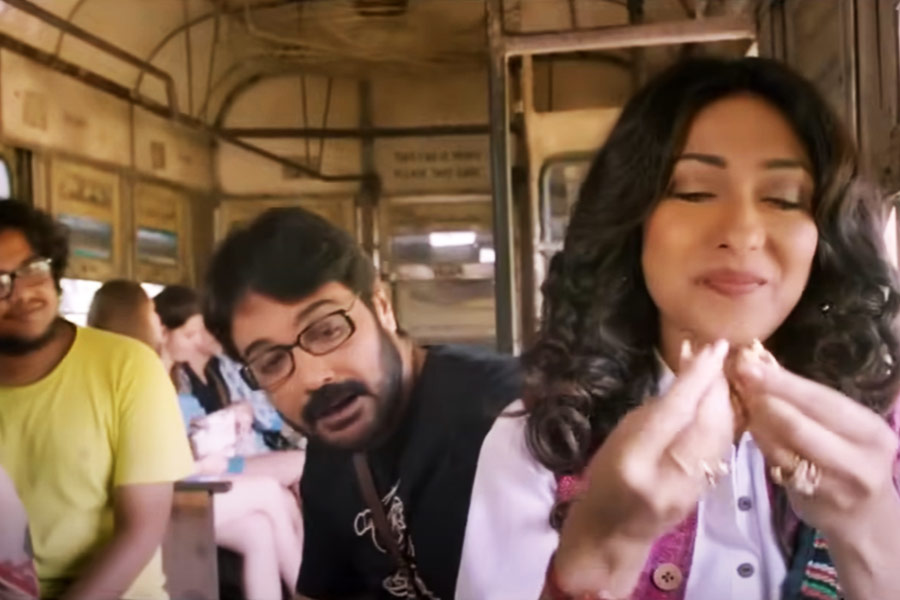
As I watched this scene, I found myself reminiscing about my own relationships, the conversations I have had on tram rides (unfortunately very few), and the memories they carried. Praktan made me realise that sometimes the most meaningful journeys are those that take us back to where we once were, even as we move forward.
The tram is not just a part of the cityscape but a space for moments of intimacy, arguments and connection — much like in the film.
‘Kuchh Bheege Alfaaz’ (2018): Trams as trails of old-school love
In Onir’s Kuchh Bheege Alfaaz, trams are portrayed as carriers of hopes, dreams, and observers of urban life. This underrated — in my opinion — film revolves around Archana (Geetanjali Thapa), a meme agency worker with vitiligo and Alfaaz (Zain Khan Durrani), a poetic radio jockey. Set against the backdrop of Kolkata, trams bring people closer, even in their silence.
What surprised me was the film’s seemingly intentional use of trams as the primary mode of transport in an era of taxis and buses. It’s as if the trams themselves are analogies to the nervous old-school romance blossoming between Archana and Alfaaz, mirroring the characters’ emotional journeys.

‘Tram 32A, 11AM, Shyambazar to Esplanade, Find me.’
Their first meet, scheduled to take place on a tram turns out to be a missed opportunity, leaving a dismal sense of getting so close yet not quite. The anticipation, the apprehension, the what ifs — it all felt so painfully real. And when they finally meet on an empty tram at the very end of the film, I couldn’t help but feel a bit emotional.
The movie fades into the rolling credits while the tram glides away. Archana and Alfaaz walk away together, finally free from the weight of lingering uncertainties as if the tram itself had orchestrated this moment, slowly but surely bringing them together.
From solitude to the final convergence, trams serve as both literal and metaphorical vehicles for the story’s progression. What I love most is how they transform the mundane into something magical, reminding us that even in our daily commutes, amidst the cacophony of city life, there’s always the possibility of life-changing encounters.
More than nostalgia
In the years to come, trams will likely continue to feature in films — perhaps only as nostalgic reminders of the Kolkata that used to be. But for those of us who’ve had the privilege of experiencing a tram journey through Kolkata, they will always represent something more.
Everytime I notice a tram passing by — which might never happen again — I find myself looking at it not just as a mode of transport, but as a repository of stories, a keeper of secrets and a silent performer that has shared screen space with some of Indian cinema’s biggest stars.
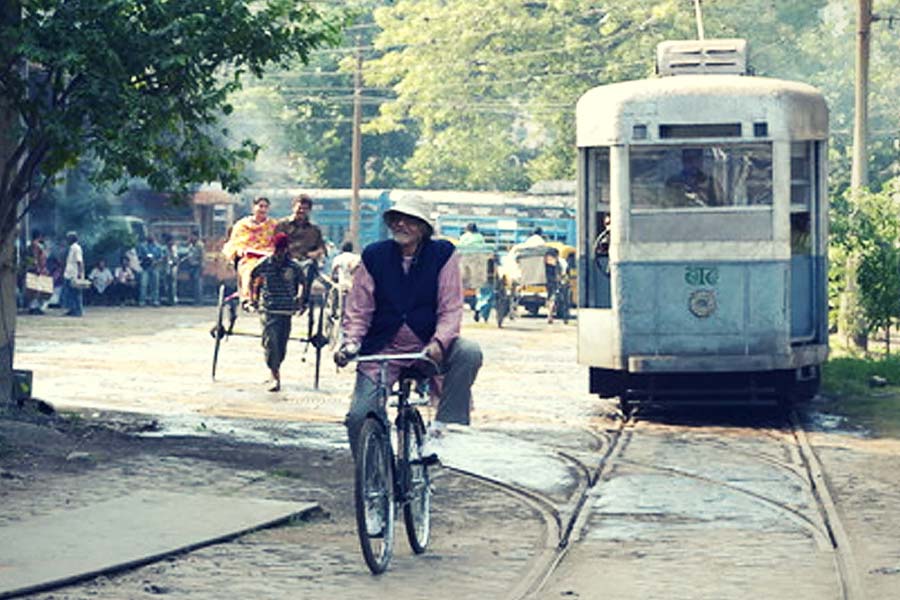
Amitabh Bachchan as Bhaskor Banerjee in a scene from Shoojit Sircar’s ‘Piku’ (2015)
With the gradual phasing out of trams I wonder, will future generations know the tram as anything more than just a cinematic symbol? Will it become something they only experience through the lens — a relic of a city?
Trams aren’t just vehicles but time capsules, carrying the stories of a city, its people and its place in the world. So the next time you see a tram in a film, take a moment to appreciate it as a piece of the city’s soul, rolling on, even as the tracks begin to fade.
